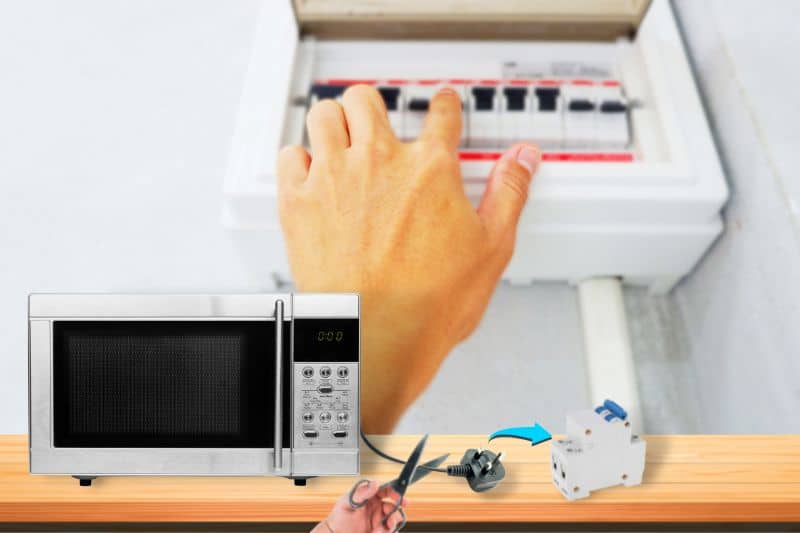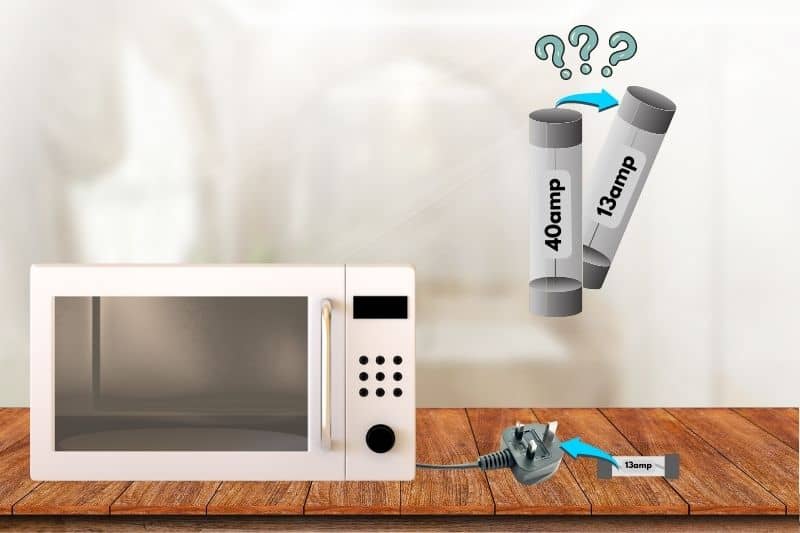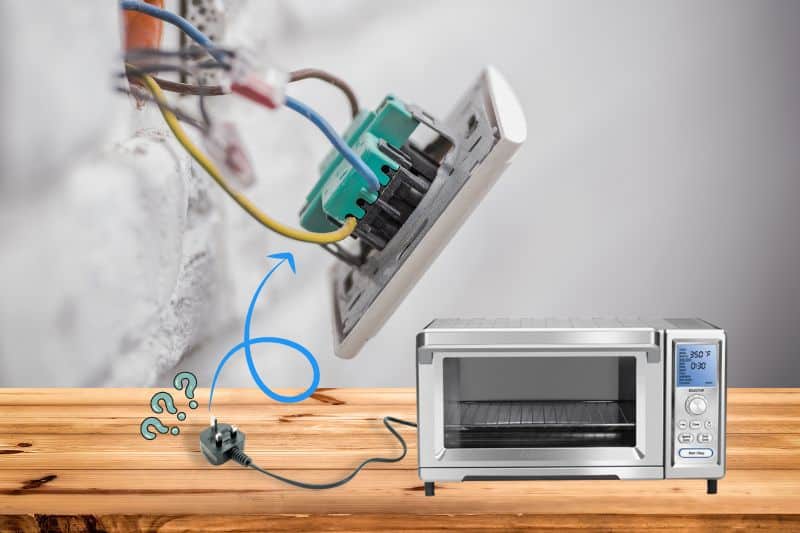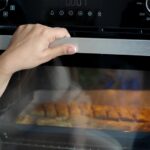If you’ve just found your perfect oven, but it comes with a plug, and you have a cooker circuit in your kitchen, you may be wondering if you can simply hardwire your new plug-in oven into the existing cooker circuit.
There are a lot of conflicting answers to this kitchen question online, and it can be quite a confusing cooker conundrum to unpack. But we’ll do our best below.
Hardwiring a Plug-In Oven into a Cooker Circuit
Let’s start with the basics. A plug-in oven comes with a 13amp plug because these ovens are rated at under 3kW of power. This means you can plug this oven into any circuit in your home, and it will run alongside other appliances.
In theory, you could plug one of these ovens into any room of the home that has a standard plug socket.
So, you could sit on your sofa watching TV with the oven roasting a chicken right next to you. Please don’t actually do that, though!

The cooker circuit in your home is a dedicated circuit for ovens that draw more than 13amps (they are rated to over 3kW of power). This circuit is 40amps.
This means that the oven can draw as much power as it needs to without disrupting any other appliances because there are no other appliances using the circuit.
So, if you were to hardwire a 13amp oven into a 40amp circuit, things could get dangerous. If something were to go wrong, the oven drawing in too much juice, for example, the circuit’s safety measure wouldn’t come into play until the cooker started drawing in more than 40amps.
This means that the oven could be damaged and do some serious damage to your kitchen before the circuit trips.
Can’t I Just Switch the Fuse?

One simple theory online is to simply switch the fuse in the cooker circuit from 40amps to 13amps. That way, you’re effectively changing the cooker circuit into a standard electrical circuit that your oven can run on safely.
We wouldn’t recommend this option either, though. Cookers than run on 40amp circuits have internal fuses. These are a common fault in some ovens. This means that the circuit itself doesn’t have a fuse.
Instead, it relies on the oven installed into the circuit to have one. A plug-in oven does have a fuse in the plug (a 13amp fuse). So, by removing the plug, your new oven no longer has a fuse.
This means the only safety feature this circuit has now is the fuse box in your home. And without a 13amp fuse anywhere in the circuit, the oven will need to draw over 40amps to trip the fuse in the box.
Changing the Cooker Circuit
It is perfectly safe to change a cooker plug socket to a standard double plug socket if you want. You can then plug your oven into one of these sockets and use the other one for anything you like.
Granted, this isn’t hardwiring the cooker in, but it is the safest option as you can still use the plug the oven came with, but the oven will be on a separate circuit.
By doing it this way, all the safety features for your new oven are still in place, and you are making use of the cooker circuit.
We hope this look at hardwiring a plug-in oven has been useful. If you still aren’t sure about plug-in ovens and cooker circuits, please consult an electrician before you do anything at all.
Also, Chef’s Pick has some of the best ovens available in the UK right now (hardwired and plug-in) so check our lists of ovens out while you are here!

Scott is a writer and a passionate home chef. His passion for cooking began when he was 10 years old. Scott has been writing professionally for over five years now and loves to combine his passion for cooking with his day job.







